If you’ve ever wondered about Iowa weather or want to tailor your travels and outdoor adventures to its seasonal rhythms, look no further! We have all the Iowa weather details you need below. Uncover climate patterns, seasonal highs and lows, precipitation insights, and forecasts – all the essentials for planning your perfect Iowa experience!
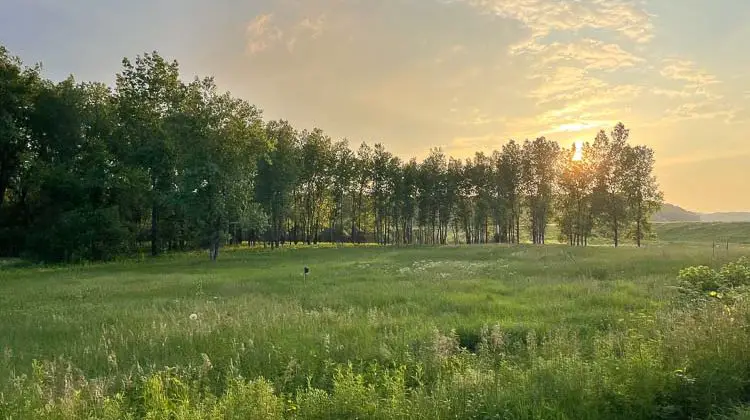
Table of Contents
- What is the weather in Iowa?
- Winter Weather in Iowa
- Spring in Iowa
- Summer in Iowa
- Fall in Iowa
- When is the best time to visit Iowa?
- Does Iowa get extreme weather?
- Des Moines, Iowa, average monthly temperatures and precipitation
- What’s the current Iowa weather?
What is the weather in Iowa?
Iowa has four distinct seasons. In other words, the weather depends on the season!
Summers are generally warm and humid. Fall is cooler and very colorful. Winter is cold and sometimes snowy. And spring warms up, with the most rainfall toward the end of the season.
The season generally indicates what type of weather to expect. Still, even within the same season (or the same week, for that matter), Iowa temperatures and precipitation can vary widely. Each season has a range of weather and temperatures, especially during the transition months of spring and fall.
For instance, from late February to early March 2022, Iowa experienced a whole gamut of weather, from warm 70-degree days to snow to tornadoes. That’s an outlier, but it goes to show sometimes you never know what you’re going to get!
The weather patterns across the state during any given time are relatively similar. Still, there are differences between northern Iowa and southern Iowa. Northern Iowa tends to be cooler than southern Iowa. That means fall leaves turn sooner in northern counties, and spring flowers pop up earlier in southern counties.
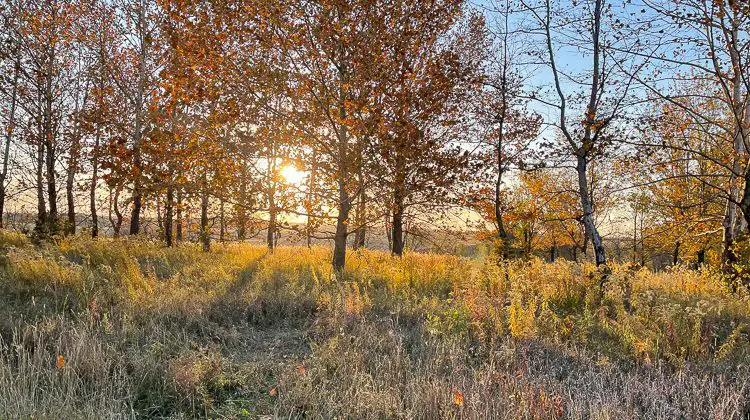
Iowa’s climate
Iowa is in a humid continental climate region characterized by four seasons and a wide range of temperatures throughout the year. It means the summers are hot and humid, winters are cold, and precipitation occurs throughout all seasons (though dry spells happen).
Average relative humidity: 70 – 75%
Summer average high temps: 79 – 86°
Winter average low temps: 6 – 20°
Average annual rainfall: 35 inches
Average annual snowfall: 30 inches (but varies by part of the state)
Sources: National Weather Service and NCEI
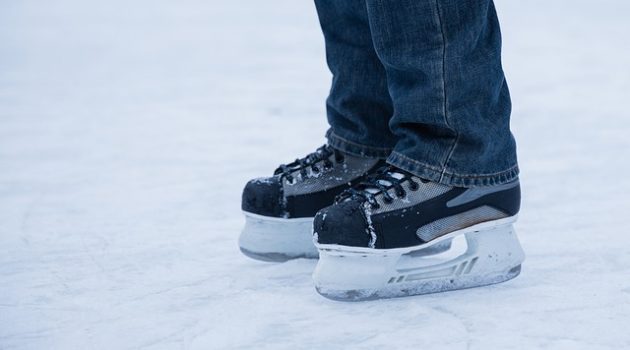
Winter Weather in Iowa
Most of Iowa’s winter weather is during December, January, and February. Technically, winter lasts from December to March. But some years, Iowa’s winter weather makes an appearance as early as November and as late as May!
Average winter temps in Iowa
- Average winter temperatures across the state range from 16 – 30°.
- Average winter high temperatures are between 25 – 39°
- Average winter low temperatures are from 6 – 20°
Iowa snow totals
Snowfall totals are relatively light compared with our Midwestern neighbors to the north.
- Iowa’s average annual snowfall is 30 inches; it ranges from 18 – 42 inches, with the northern part of the state often receiving more.
- The average date of the first inch of snowfall is from November 10 to December 19, with the north/northwest part of the state often receiving it first.
- The average date for the last inch of snowfall is from February 27 to April 2, with the north/northwest on the later end of the spectrum.
Learn more about winter in Iowa: Winter in Iowa: Average Temps, Snow, and All the Winter Things To Do!
Spring in Iowa
Spring weather in Iowa can occur from February through June, but most spring-like weather is from March through May.
Spring brings more folks outdoors as the weather warms and the flowers and trees start to pop once again. But it can also bring more unpredictable weather, from late-season snowstorms to thunderstorms capable of producing tornados.
- Average spring high temps in Iowa (March-May) are between 67 – 72°.
- The average first 70° day is from March 14 to April 12, with the southern part of the state being the first to experience warmer weather.
- The average date of last frost is from April 27 to May 14, with the state’s northern counties being the latest.
- The average spring precipitation is about 10 inches.

Summer in Iowa
Most of Iowa’s summer weather is experienced June through August, though it can extend into September. Summer in Iowa is humid and warm, with June being the rainiest and July the hottest. Toward the end of August, signs of fall appear.
- Average summer temperatures are 68 – 76°.
- Average summer high temperatures are 79 – 86°.
- Average summer low temperatures are 68 – 76°.
- The average first date of 90° temp is from May 14 to June 24, with the east/southeast part of the state being first.
- Average summer precipitation is around 13 inches.
Fall in Iowa
Signs of fall in Iowa begin in late August, but most fall-like temperatures and fall foliage are in late September through October. The data below include September, October, and November.
Fall has been touted as the best time of the year to be in Iowa. And we have to agree.
Fall has less rainfall, less humidity, and more moderate temperatures. Add in the harvest season and gorgeous fall foliage, and there’s just something extraordinary about fall in Iowa.
- Average fall high temperatures are about 61°. But that temperature varies significantly from September (warmer) to November (much colder).
- The last 70° day is between October 23 and November 9, with the southern half being later.
- The average date of the first frost is from Sept 24 to October 11, with the state’s northern half being first.
- Average fall precipitation is around 8”.
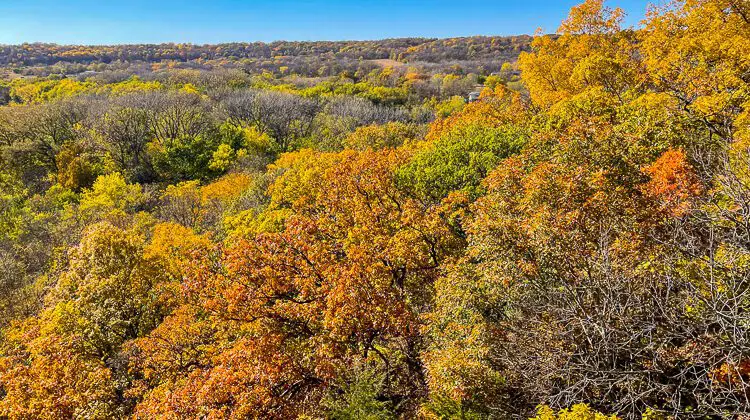
When is the best time to visit Iowa?
Well, that all depends on the type of weather you prefer! Iowa is an excellent place to visit year-round. If you prepare for your visit with the appropriate attire, it can be a great place to explore during all four seasons.
All that said, fall is a favorite season among many locals and visitors alike. Mild temperatures and lower humidity, along with the harvest and fall foliage, make it ideal for outdoor adventures!
Does Iowa get extreme weather?
Snow, ice, blizzards, severe thunderstorms, tornadoes, derechos, and flooding are all extreme weather risks. Of course, these weather risks are all dependent on the season.
Snow, blizzards, ice, and extreme cold can create dangerous conditions in the winter. Yet, winter precipitation is relatively low compared to other seasons and compared to states to the north and east.
Tornadoes and severe thunderstorms, as well as flooding, are more likely to occur during the spring months but can happen any time of the year.
Due to Iowa’s location, it doesn’t experience hurricanes, and though they’ve been felt, Iowa rarely experiences earthquakes.
Des Moines, Iowa, average monthly temperatures and precipitation
| Month | Average High/Low | Average Precipitation |
|---|---|---|
| January | 30/11 | .9 |
| February | 35/15 | 1.2 |
| March | 48/27 | 2.2 |
| April | 61/38 | 3.7 |
| May | 71/50 | 4.7 |
| June | 80/60 | 4.7 |
| July | 84/64 | 4.5 |
| August | 82/62 | 4.7 |
| September | 76/52 | 3.1 |
| October | 63/40 | 2.5 |
| November | 47/28 | 2.2 |
| December | 34/16 | 1.3 |
What’s the current Iowa weather?
See The Weather Channel’s 10-day weather forecast for Iowa cities:
- Des Moines
- Ames
- Davenport
- Dubuque
- Burlington
- Iowa City
- Cedar Rapids
- Waterloo
- Council Bluffs
- Sioux City
- Fort Dodge
See the current Iowa radar.
Below are a couple of statewide radars to check the state’s current weather conditions.
AccuWeather
Weather Underground
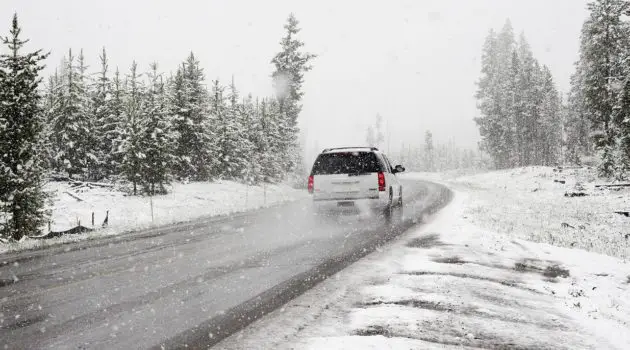
Check road conditions
The best way to check road conditions, especially during the winter, is through the Iowa 511 app. There, you can see snowplows (and plow cams), traffic cameras, and road conditions. The app is handy any time of the year because you can also see road construction, accidents, rest areas, and more.

